Storage outside of the recommended temperature range can reduce efficacy or completely inactivate the vaccine. Freezing, even for a few seconds, can render killed products useless.
Research efforts on vaccine storage and handling conducted by University of Arkansas, University of Nevada – Reno, University of Tennessee and University of Idaho Extension faculty have all shown that improvements are needed on the farm or ranch and at retail outlets. A study conducted in Idaho showed that only 33% (see Figure 1) of producer refrigerators and, even more alarmingly, only 34% (see Figure 2) of vaccine retailer refrigerators were operating consistently in the proper temperature range.
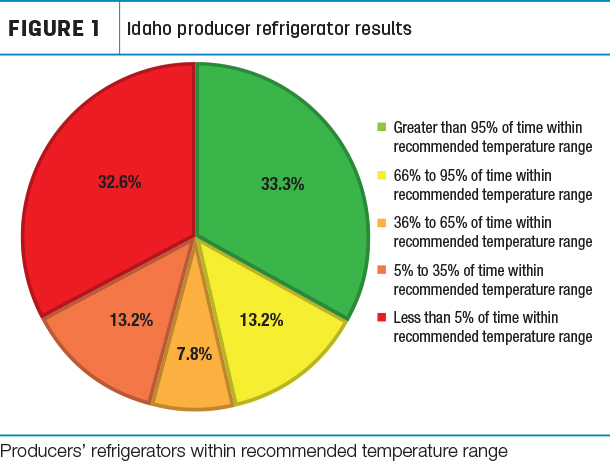
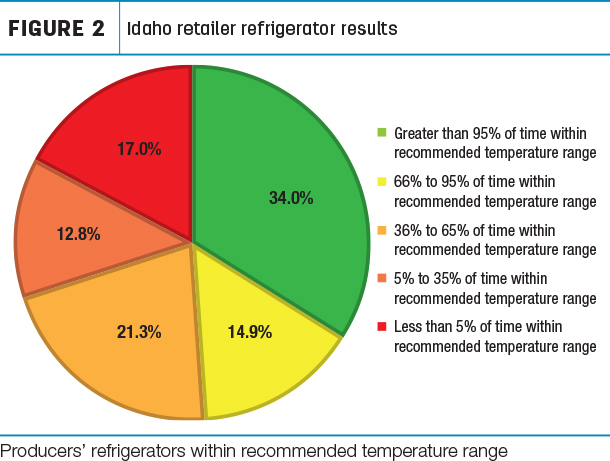
In the Idaho study, very few retailers and even fewer beef producers used a thermometer to monitor refrigerator temperatures. When conducting the study, I remember one specific response from a vaccine retailer. When asked how they knew their vaccine cooler was working properly, the clerk stated, “Well, if it feels cool when we walk in, we know it is working.” Table 1 shows that statement not to be accurate.
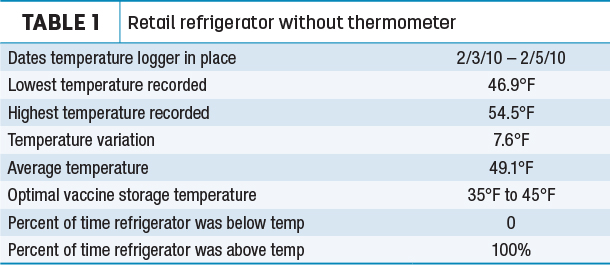
There are some important questions that should be asked of your vaccine retailer.
- Is there a thermometer in your vaccine cooler?
- Are minimum and maximum temperatures recorded and monitored on a regular basis?
- Is the temperature maintained within the recommended range?
- Do you immediately check and store vaccine when it arrives?
- How do you handle vaccine after you receive it?
If your vaccine retailer cannot answer these questions to your satisfaction, I suggest you find another retailer. When vaccines are purchased, they should be kept cool (in recommended temperature range) using ice packs and a cooler on the trip home from your retailer.
On the ranch, vaccine refrigerator temperatures should be monitored using a minimum-maximum thermometer. This will help you observe more accurately the temperature range in which your refrigerator operates and determine if there are any issues that need to be addressed. Figure 3 shows the tight temperature operating range of a properly functioning and adjusted refrigerator.
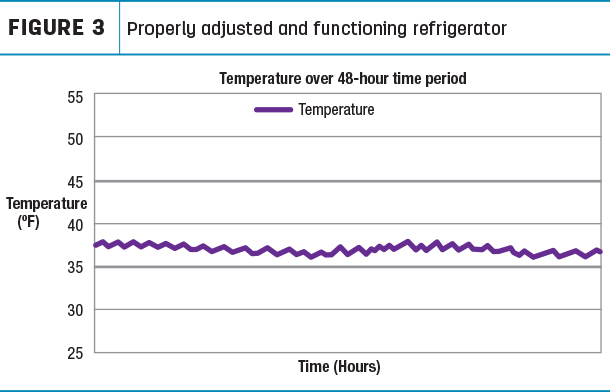
Figure 4 shows a refrigerator with considerable temperature variation that operates below freezing on a regular basis. This refrigerator needs serviced or replaced.
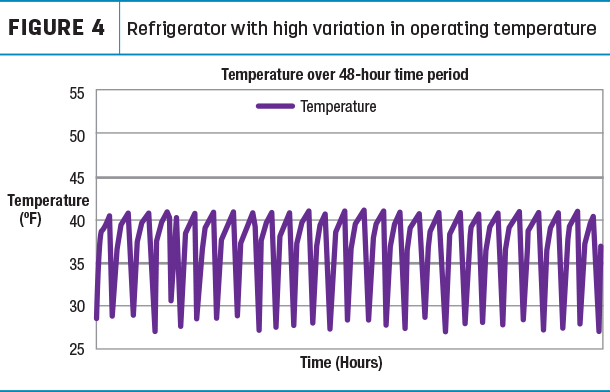
There are numerous options available for minimum-maximum thermometers. One thermostat model is available for less than $15 that will record and save minimum and maximum temperatures until it is manually reset. An alarm can also be set to alert the user to any temperatures outside the range you set.
Remember, livestock do not gain immunity from vaccines that have been damaged, altered or destroyed through improper handling and storage practices. For additional information on proper vaccine handling and storage, please refer to PNW 637 Cattle Vaccine Handling and Management Guidelines available online. ![]()

-
Scott Jensen
- University of Idaho
- Extension Educator
- Email Scott Jensen







